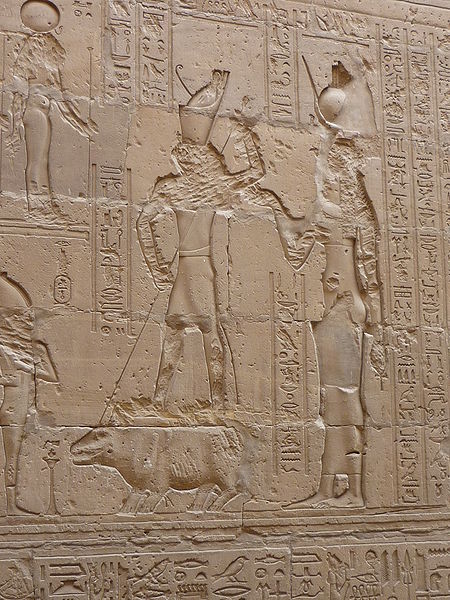Iconoclasm is the social belief in the importance of the destruction of icons and other images or monuments, most frequently for religious or political reasons. People who engage in or support iconoclasm are called iconoclasts, a term that has come to be figuratively applied to any individual who challenges "cherished beliefs or venerated institutions on the grounds that they are erroneous or pernicious."
"Triumph of Orthodoxy" over iconoclasm under the Byzantine Empress Theodora and her son Michael III. Late 14th – early 15th-century icon.
Defaced relief of Horus and Isis in the Temple of Edfu, Egypt. Local Christians engaged in campaigns of proselytism and iconoclasm.
Saint Benedict's monks destroy an image of Apollo, worshiped in the Roman Empire
Byzantine Iconoclasm, Chludov Psalter, 9th century
Iconodulism designates the religious service to icons. The term comes from Neoclassical Greek εἰκονόδουλος (eikonodoulos), meaning "one who serves images (icons)". It is also referred to as iconophilism designating a positive attitude towards the religious use of icons. In the history of Christianity, iconodulism was manifested as a moderate position, between two extremes: iconoclasm and iconolatry.
Late 14th-early 15th century icon illustrating the "Triumph of Orthodoxy" under the Byzantine empress Theodora over iconoclasm in 843. (National Icon Collection 18, British Museum).



